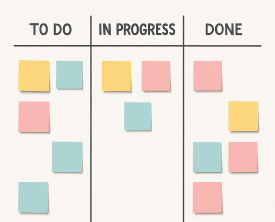How Real-Time Scheduling Helps Businesses Operate at Top Speed
By Mark Ballance, Resource Scheduling Specialist at Schedule it Ltd since 2010.
 Systems, equipment, and personnel must be in sync if a company wants to grow and win new business. But to achieve this cohesion, managers and decision-makers need the most up-to-date data available. So in this article, we explore how the real-time data generated by resource scheduling software can help your firm.
Systems, equipment, and personnel must be in sync if a company wants to grow and win new business. But to achieve this cohesion, managers and decision-makers need the most up-to-date data available. So in this article, we explore how the real-time data generated by resource scheduling software can help your firm.Increased Resource Visibility
In the manufacturing sector, supply chain visibility is a 'must.' This real-time visualization of products from initial creation all the way to their final destinations helps analyze their:
Delivery timeframes
Ability to react to demand spikes
Future production needs
Service organizations can gain much of this same information through resource scheduling software. The real-time graphic interface makes opportunities to expedite and streamline more apparent. Gaps in shift coverage are easier to assign. And progress is easier to track from the initial task to the final deliverable.
Service organizations can gain much of this same information through resource scheduling software. The real-time graphic interface makes opportunities to expedite and streamline more apparent. Gaps in shift coverage are easier to assign. And progress is easier to track from the initial task to the final deliverable.
Improved Allocations
In the real world, most projects have an end date before anyone has done any significant planning. And once the planning begins, expected resources are booked elsewhere or too many resources are allocated in one area while another area is left too thin.
With real-time resource data, managers will know when staff, equipment, and space are available. This data can be checked online, on a smartphone, or from a tablet, so allocations can be quickly made, evaluated, and corrected if necessary.
With real-time resource data, managers will know when staff, equipment, and space are available. This data can be checked online, on a smartphone, or from a tablet, so allocations can be quickly made, evaluated, and corrected if necessary.
Eliminating Manual Process Bottlenecks
Resource schedules are in a constant state of flux between bookings, maintenance, trainings, and dozens of other reasons. And in a scheduling environment where one person manually inputs all these changes like most spreadsheet scheduling systems unproductive hours pile up fast thanks to data entry mistakes or last-minute bookings.
An open, real-time environment eliminates the risk of this unproductive cost. Any team member can update the status of a resource. Real-time alerts eliminate the risk of double-bookings or coverage gaps. Plus, there are opportunities for process improvement and organizational learning because every team member contributes data. This not only cuts down the need for manual schedule tracking, but also creates a more team-oriented environment.
An open, real-time environment eliminates the risk of this unproductive cost. Any team member can update the status of a resource. Real-time alerts eliminate the risk of double-bookings or coverage gaps. Plus, there are opportunities for process improvement and organizational learning because every team member contributes data. This not only cuts down the need for manual schedule tracking, but also creates a more team-oriented environment.
Enhancing Performance Evaluation
Experts agree non-productive resources are a main reason for poor profitability. If an employee is not producing during his or her billed hours, the client's business is at risk. If a piece of equipment gets under-utilized, costs can skyrocket. Real-time scheduling data helps management better understand business performance.
Managers can be notified the moment a milestone is achieved. They'll know how many hours were spent on every task involved with that milestone. They'll also learn the location of any equipment used in the tasks through satellite navigation integration. All this knowledge helps paint a clear picture of performance. It tracks 'who did what when.' It also helps plan next steps and future jobs.
Managers can be notified the moment a milestone is achieved. They'll know how many hours were spent on every task involved with that milestone. They'll also learn the location of any equipment used in the tasks through satellite navigation integration. All this knowledge helps paint a clear picture of performance. It tracks 'who did what when.' It also helps plan next steps and future jobs.
How Do You Use Real-Time Data?
Data to help a business stay lean.
Functionality to serve current customers efficiently.
Increased preparedness for future opportunities.
These are just some real-time scheduling benefits. We'd love to hear more ideas from you. How do real-time schedules benefit your business' culture and/or bottom line? How can scheduling software help?
Functionality to serve current customers efficiently.
Increased preparedness for future opportunities.
These are just some real-time scheduling benefits. We'd love to hear more ideas from you. How do real-time schedules benefit your business' culture and/or bottom line? How can scheduling software help?
Try Schedule it Free
No credit card required. Capterra/G2











